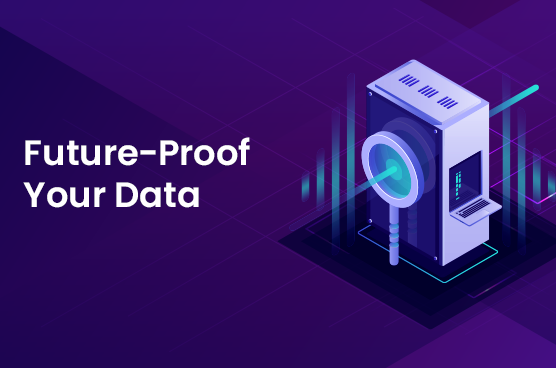_ _ Infobelt
Navigating Data Retention and Application Retirement Strategies
Organizations are constantly evolving their technology stacks. However, with every upgrade or transition, legacy applications and data silos often get left behind. Managing these retired applications and ensuring proper data retention is a critical challenge that many businesses face.
This blog will break down the key strategies for addressing data retention and application retirement in a way that’s easy to understand, even for non-technical readers.
Why Application Retirement Matters
When organizations modernize their systems or go through mergers and acquisitions, they often end up with outdated applications that are no longer in active use. These legacy systems can create technical debt—a term used to describe the extra work and costs that arise from using outdated technology.
Here’s why retiring applications properly is crucial:
- Financial Risks: Maintaining old systems can be expensive due to licensing, support, and infrastructure costs.
- Security Risks: Outdated applications may run on unsupported software, making them vulnerable to cyberattacks.
- Operational Risks: As employees leave or retire, the knowledge needed to maintain these systems may be lost.
- Business Risks: Data stored in old systems may become inaccessible, complicating compliance with data privacy regulations.
Key Strategies for Application Retirement
Retiring applications isn’t a one-size-fits-all process. Organizations need to carefully evaluate their options and choose the right strategy based on their specific needs. Below are some of the most effective approaches:
Use Third-Party Archiving Solutions
Third-party solutions are specialized tools designed to help organizations manage and archive data from retired applications. These solutions are particularly useful when:
- Data needs to be retained for three or more years.
- There are strict compliance requirements (e.g., legal holds, audit trails).
- The organization needs easy access to archived data for business or operational tasks.
Types of Third-Party Archiving Solutions
- Retain Database and Content: Move the existing application database to a new storage system for long-term retention.
- Transform Database to Normalized Data Structure: Convert data into open formats like XML or JSON for easier access.
- Archive to Vendor-Specific Archive Structure: Use the vendor’s infrastructure to store data, with built-in tools for searching and reporting.
DIY (Do-It-Yourself) Strategies
For organizations with the right expertise, DIY strategies can be a cost-effective way to retire applications. Here are some common DIY approaches:
- Retain the Application: Keep the application running if retention is short-term and costs are low.
- Bin or Delete the Application: If the data is no longer needed, simply delete it.
- Print Application Reports: Use the application’s print function to create reports, then securely store them before deleting the application.
- Store a Secure, Offline Copy: Save a copy of the database in a secure, offline environment (e.g., cloud storage with Object Lock).
- Package the Application and Data: Use migration tools to move the application and its data to a newer system.
- Develop an In-House Solution: Save data to a modern database or data warehouse and create custom access procedures.
Including SaaS Applications in Your Strategy
Many organizations overlook SaaS (Software as a Service) applications when planning for data retention and retirement. However, as SaaS adoption grows, so does the need to manage the data stored in these systems. Common SaaS applications that may require archiving include:
- Cloud Office Suites (e.g., Microsoft 365, Google Workspace)
- ERP Systems (e.g., SAP, Oracle)
- CRM Platforms (e.g., Salesforce)
Challenges with SaaS Data Retention
- Data Access: Some SaaS providers offer APIs to extract data, but others may require manual exports, resulting in multiple file formats (e.g., CSV, XML).
- Contractual Obligations: Ensure that data retention and access are addressed in the SaaS agreement during procurement.
Strategies for SaaS Data Retention
- Use third-party archiving tools to manage SaaS data.
- Implement DIY solutions such as exporting data to a secure storage environment.
Building a Cross-Functional Team for Application Retirement
Retiring applications isn’t just an IT task—it requires collaboration across the organization. Here’s who should be involved:
- IT and Operations (I&O) Teams: Responsible for managing the technical aspects of application retirement.
- Business Owners: Ensure that business needs and compliance requirements are met.
- Compliance Teams: Oversee data retention policies and legal requirements.
- Application Teams: Provide insights into the data structures and usage of the applications being retired.
By involving all these stakeholders, organizations can ensure a smooth and effective application retirement process.
Key Recommendations for I&O Leaders
If you’re responsible for managing application infrastructure, here are some actionable steps to consider:
- Evaluate Your Options: Choose between DIY and third-party solutions based on your organization’s needs, budget, and expertise.
- Prioritize Technical Debt Reduction: Focus on retiring legacy applications to reduce financial, security, and operational risks.
- Create a Holistic Strategy: Include both on-premises and SaaS applications in your data retention and retirement plans.
- Establish Clear Data Access Requirements: Ensure that archived data remains accessible for compliance and business needs.
- Invest in Training and Knowledge Transfer: Retain the expertise needed to manage retired applications and their data.
The Key is to Plan Ahead
Application retirement and data retention are complex but essential processes for modern organizations. By understanding the risks, evaluating the available strategies, and involving the right stakeholders, businesses can effectively manage their legacy systems and reduce technical debt. Whether you choose a DIY approach or invest in third-party solutions, the key is to plan ahead and ensure that your data remains accessible and secure.
By following these guidelines, organizations can navigate the challenges of application retirement and data retention with confidence.
References:
- Gartner Research: “How to Address Data Retention and Application Retirement”
- Industry Best Practices for Data Lifecycle Management

